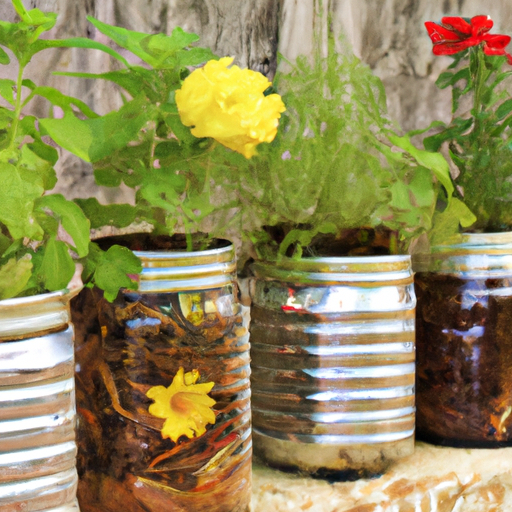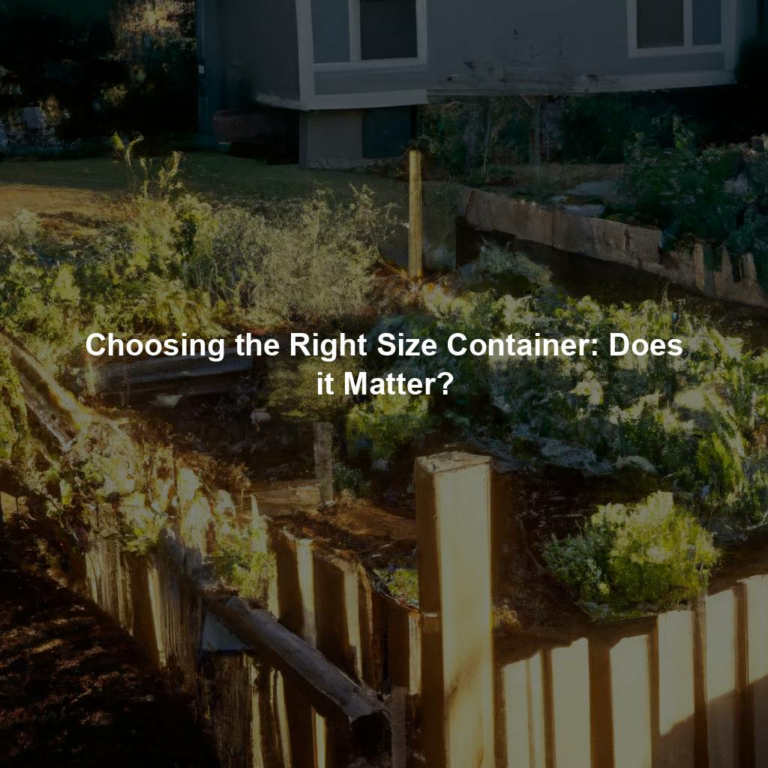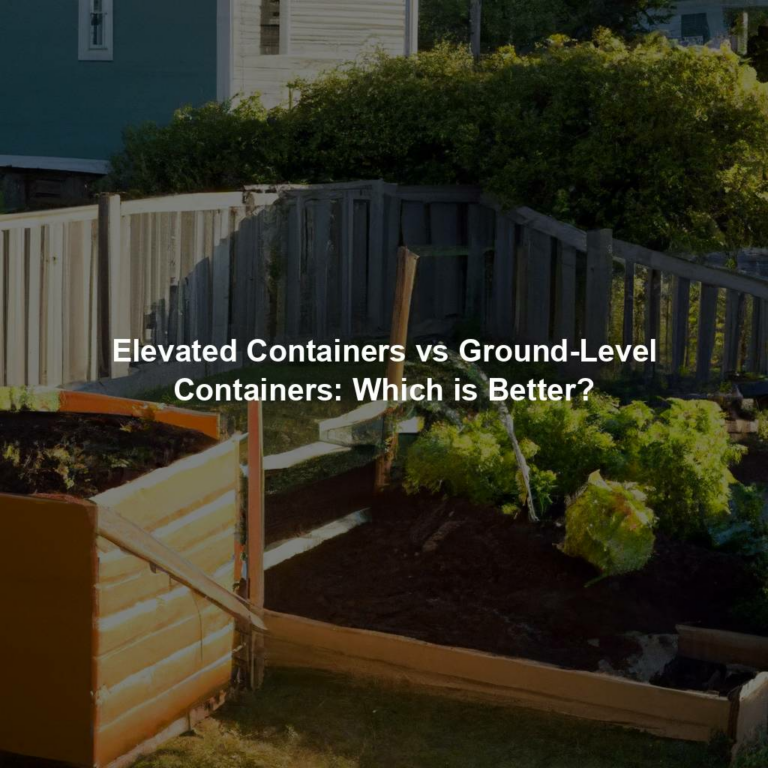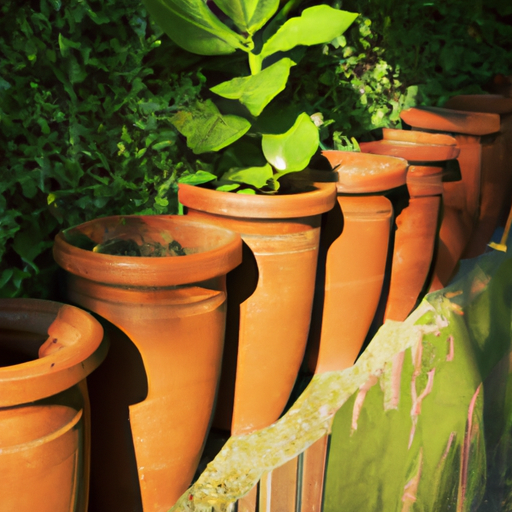Hello fellow gardeners! Are you looking for ways to save money while adding some unique flair to your garden?
Look no further than DIY containers made from household items. Upcycling old items not only gives them a new purpose, but it also reduces waste and helps the environment.
Instead of purchasing expensive planters or pots, consider using items such as mason jars, tea tins, wine bottles, or even old shoes to create one-of-a-kind containers for your plants.
Not only will you be able to customize the size and style of each container, but you’ll also have the satisfaction of knowing that you repurposed something that would have otherwise gone to waste.
So grab those empty coffee cans and let’s get creative with our gardening!
Choosing The Right Household Items For Upcycling
As a Master Gardener, it’s important to consider safety when choosing unique materials for upcycling in your garden.
While items like old tires and broken pottery can add visual interest to your space, they may also pose hazards such as sharp edges or toxic chemicals.
It’s crucial to thoroughly clean and prepare any household items before using them in the garden.
Additionally, be mindful of their intended purpose – while a metal bucket might make a charming planter, it may not hold up well under heavy rain or direct sunlight.
By taking these safety considerations into account and carefully selecting appropriate materials, you can create beautiful and functional containers for your plants without breaking the bank.
Preparing Your Containers For Planting
Now that you have chosen the perfect household items to upcycle into plant containers, it’s time to get them ready for planting. Just like a chef prepares their ingredients before cooking, gardeners must prepare their soil and drainage solutions before planting in containers.
Think of your container as a mini ecosystem – without proper soil preparation and drainage solutions, your plants will struggle to survive. Start by filling your container with nutrient-rich soil and then add compost or fertilizer for an extra boost.
Next, consider adding pebbles or rocks at the bottom of the container to improve drainage. This will prevent water from sitting in the container and causing root rot. Remember, healthy roots equal healthy plants!
Creative Design Ideas For Diy Containers
When it comes to creating DIY containers, there are endless possibilities for incorporating creative design ideas.
One way to add a unique touch is by experimenting with different painting techniques. For example, you could try stenciling on patterns or using textured paint to give your container a more interesting look.
Another option is to use unconventional materials such as old tires or broken pieces of pottery to create one-of-a-kind planters.
Don’t be afraid to think outside the box and let your imagination run wild when designing your DIY containers. With a little bit of creativity, you can transform everyday household items into beautiful additions to your garden that will impress all who see them.
Maintenance Tips For Upcycled Garden Containers
As we explored in the previous section, there are endless creative design ideas for upcycling household items into garden containers. However, it’s not just about making something aesthetically pleasing; you also want your DIY container to be durable and long-lasting.
Repurposing materials is a fantastic way to reduce waste and give new life to old objects, but it’s important to choose wisely. Consider the material’s durability, ability to withstand weather conditions, and its impact on plant health. For instance, some plastics may release toxins as they break down over time.
Additionally, routine maintenance is crucial for the longevity of upcycled containers. Regularly inspect them for cracks or damage that could compromise their structural integrity or harm plants’ roots.
With proper care and attention, your DIY container can continue to thrive alongside your beloved plants season after season.
Benefits Of Upcycling For Your Garden And Environment
As a Master Gardener, I highly recommend upcycling household items for your garden.
Not only is it sustainable and cost-effective, but it also reduces waste in our environment. By reusing materials that would otherwise end up in landfills, we are doing our part to protect the planet.
Additionally, upcycled containers can add character and charm to your garden while being functional at the same time. Whether you choose to use old buckets, cans, or even dressers as planters, you’re not only reducing waste but also creating a unique visual appeal for your garden.
So next time you’re considering throwing something away, think twice about how it could be repurposed in your garden instead!
Frequently Asked Questions
Can I Use Any Type Of Paint For Upcycling My Containers?
When it comes to upcycling household items for your garden, painting techniques can make a big difference in transforming the look of your containers. But before you start slapping on any old paint, be sure to take safety precautions and consider which type of paint is best for each material.
Did you know that using oil-based paints can release toxic fumes into the air and harm plants? Instead, opt for water-based or acrylic paints that are safer for both you and your garden.
When selecting colors, think about how they will complement the surrounding foliage and flowers. With some careful planning and attention to detail, you’ll have beautiful containers that not only add visual interest but also benefit the environment around them.
How Often Should I Water My Plants In Upcycled Containers?
Watering frequency is a critical factor to consider when growing plants in upcycled containers.
Container size, plant type and location are important considerations that will determine how often you need to water your plants.
In general, smaller containers dry out faster than larger ones, so if you’re using an old teapot or coffee mug as a planter, it’s likely that you’ll need to water more frequently than if you’re using a large plastic storage bin.
You can test the soil moisture level by sticking your finger into the soil about an inch deep – if it feels dry at this depth, then it’s time to water.
Remember that overwatering can be just as harmful as underwatering, so always aim for consistent watering rather than trying to drown your plants with too much water all at once.
Can I Use Upcycled Containers For Growing Vegetables?
Yes, you can definitely use upcycled containers for growing vegetables! In fact, it’s a great way to reap the benefits of upcycling while also enjoying fresh produce right from your garden.
When choosing containers, there are a few tips to keep in mind. First, make sure they have adequate drainage holes to prevent waterlogging and root rot. Second, consider the size of the container and the specific vegetable you want to grow – some plants require deeper or wider pots than others. Lastly, don’t be afraid to get creative with your choices – anything from old buckets to teapots can work as long as they meet these basic requirements.
Happy gardening!
Are There Any Specific Types Of Household Items That Are Not Suitable For Upcycling As Plant Containers?
As a Master Gardener, it’s important to consider the safety of your plants and yourself when using upcycled containers in your garden.
While many household items can be repurposed as planters with great success, there are some unsuitable items that could lead to potential safety concerns.
It’s crucial to avoid anything made from toxic materials or with sharp edges that could harm you or your plants.
Always err on the side of caution and choose appropriate containers for your gardening needs to ensure a thriving and safe environment for all involved.
Can I Reuse The Soil From A Previous Plant In An Upcycled Container?
When upcycling containers for indoor plants, it’s common to wonder if you can reuse soil from a previous plant.
While reusing soil may seem like an eco-friendly option, it’s important to consider container sanitation before doing so. Soil can harbor harmful bacteria and fungus that could infect your new plant. Additionally, reused soil may have depleted nutrients or be too compacted for optimal growth.
However, there are some pros to reusing soil such as saving money and reducing waste. Ultimately, the decision to reuse soil should depend on the condition of the soil and the health of your new plant.
Properly preparing and sanitizing containers is crucial for successful upcycling in gardening projects.
Conclusion
In conclusion, upcycling household items as plant containers is a creative and eco-friendly way to add some personality to your garden while reducing waste.
When choosing items to repurpose, keep in mind that not all materials are suitable for growing plants. It’s important to make sure the container has proper drainage and won’t leach harmful chemicals into the soil.
Remember to water your plants regularly, but also be mindful of overwatering. As a Master Gardener, I recommend checking the moisture level of the soil before watering and adjusting accordingly.
And if you’re feeling adventurous, try using upcycled containers for growing vegetables! Just make sure they have enough space and sunlight to thrive.
With a little creativity and care, your DIY containers can become beautiful additions to your garden that you can feel proud of.





